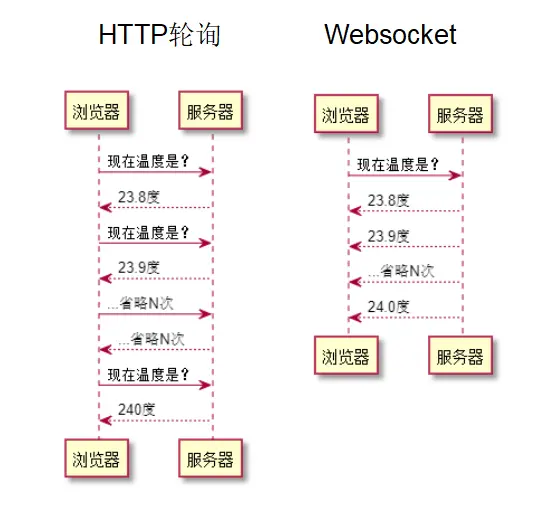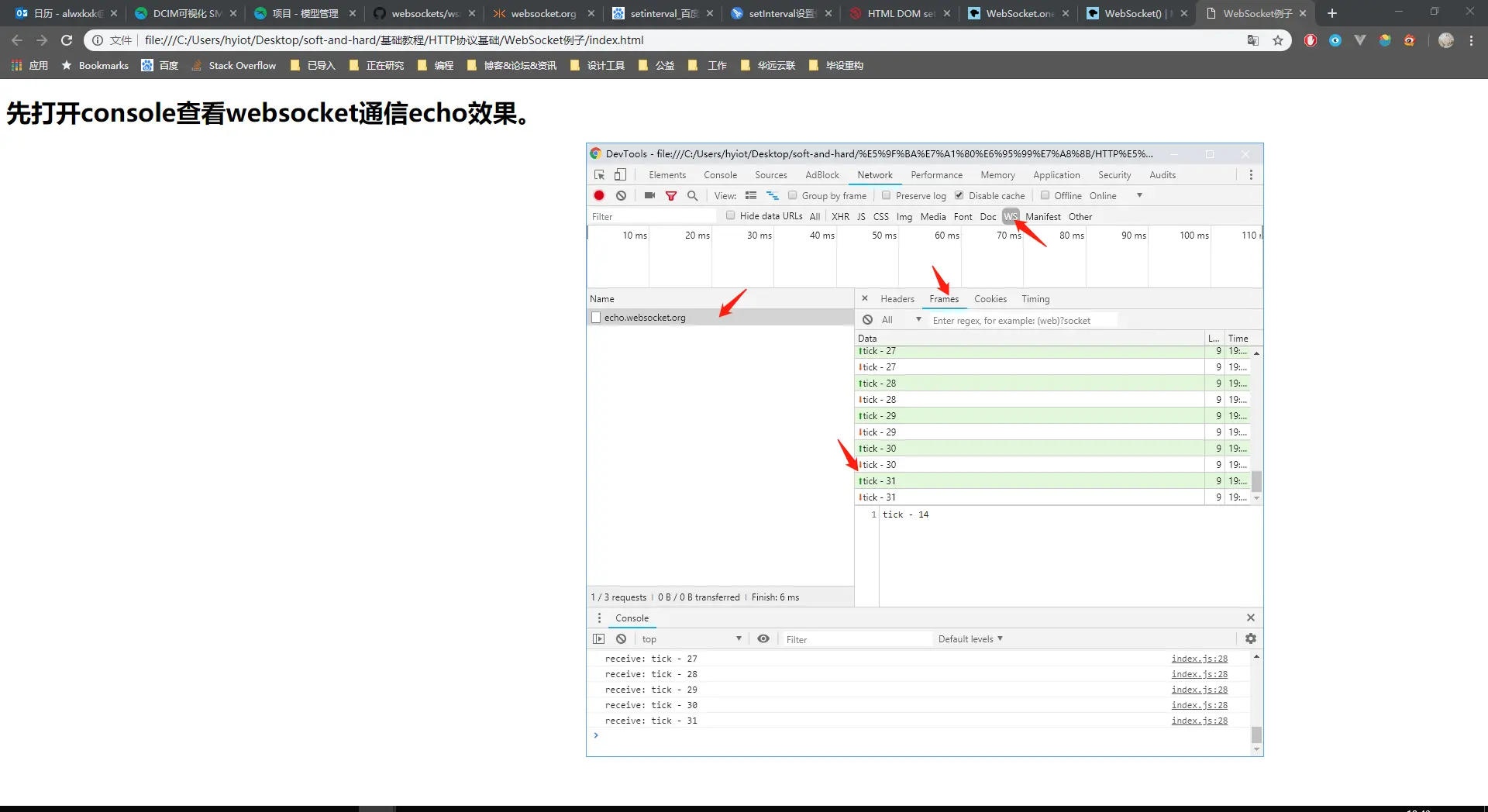【软硬结合】Websocket协议
条评论在阅读本篇文章之前,你已经阅读了:
本篇视频
本篇学习内容
- 了解Websocket协议的特点与使用场景
- 使用、调试Websocket通信
WebSocket协议
建立TCP通信之后,服务器端是能向客户端随时随地主动发数据。但HTTP协议的设计就是无连接,“一问一答,不问不答”,客户端不发起请求,服务器不能主动向客户端发送数据。在一些追求实时性的应用场景下,硬是使用HTTP轮询的办法去获取最新的数据,这就有严重的性能问题。如果轮询时间太短,机器扛不住。如果轮询太长,那么数据更新得太慢。即HTTP协议缺乏实时性,能不能像TCP socket通信一样,建立通信后不断开连接,并且能让服务器主动向客户端发送数据。基于这样的理念,就诞生了WebSocket协议,允许在上HTTP协议基础之上,达到TCP socket通信一样的效果。
在追求实时性应用场景里,比如说聊天室,物联网应用要实时刷新数据,都会用到WebSocket协议,赋予界面实时更新数据的能力。举个例子,现在我想实时显示温度,若使用HTTP协议轮询,要更新十次数据就需要发起十次请求,“十问十答”。使用WebSocket协议只需要发起一次请求,就可以做到“一问十答”,由服务器主动推送数据给浏览器:
使用、调试Websocket
http://websocket.org/提供了一个websocket测试网址,会回复所接收的数据(echo:回声),我们可以在JS里直接使用浏览器自带的API来使用websocket。我们每秒向websocket服务器端发送一个值,它就会回复相同的内容。源代码可在项目代码里的\基础教程\WebSocket协议\WebSocket例子找到:

1 | // 创建websocket连接 |
服务器端可以使用ws模块搭建WebSocket服务器,然后就可以使用从浏览器直接调用 WebSocket API进行连接。为方便学习,不增加太多新概念,服务器端我们使用ws模块进行演示。具体代码可查看源代码\基础教程\WebSocket协议\Websocket服务器端例子,运行前先阅读该目录下的README。
我们依旧使用Express建立起HTTP服务器。要运行它,进入基础教程\WebSocket协议\Websocket服务器端例子\myapp目录,执行npm install安装依赖后,再运行npm run start。
在它的基础上,添加了ws模块,代码放在myapp\bin\websocket.js里。
1 | // bin\websocket.js |
然后在bin\www里使用它:1
2
3// bin\www
let websocket = require('./websocket.js')
websocket.init(server)
补充说明
而在平时开发使用,一般开发者会使用socket.io模块,这个是在WebSocket协议基础之上,增加了一系列功能如:支持命名空间、超时重连、若浏览器不支持WebSocket则自动降级使用HTTP轮询等等。使用socket.io时,并不能直接使用浏览器的WebSocket API连接,必须使用socket.io库。
还有人做了一个websocket在线调试工具,调试时也可以用这个工具来调试。